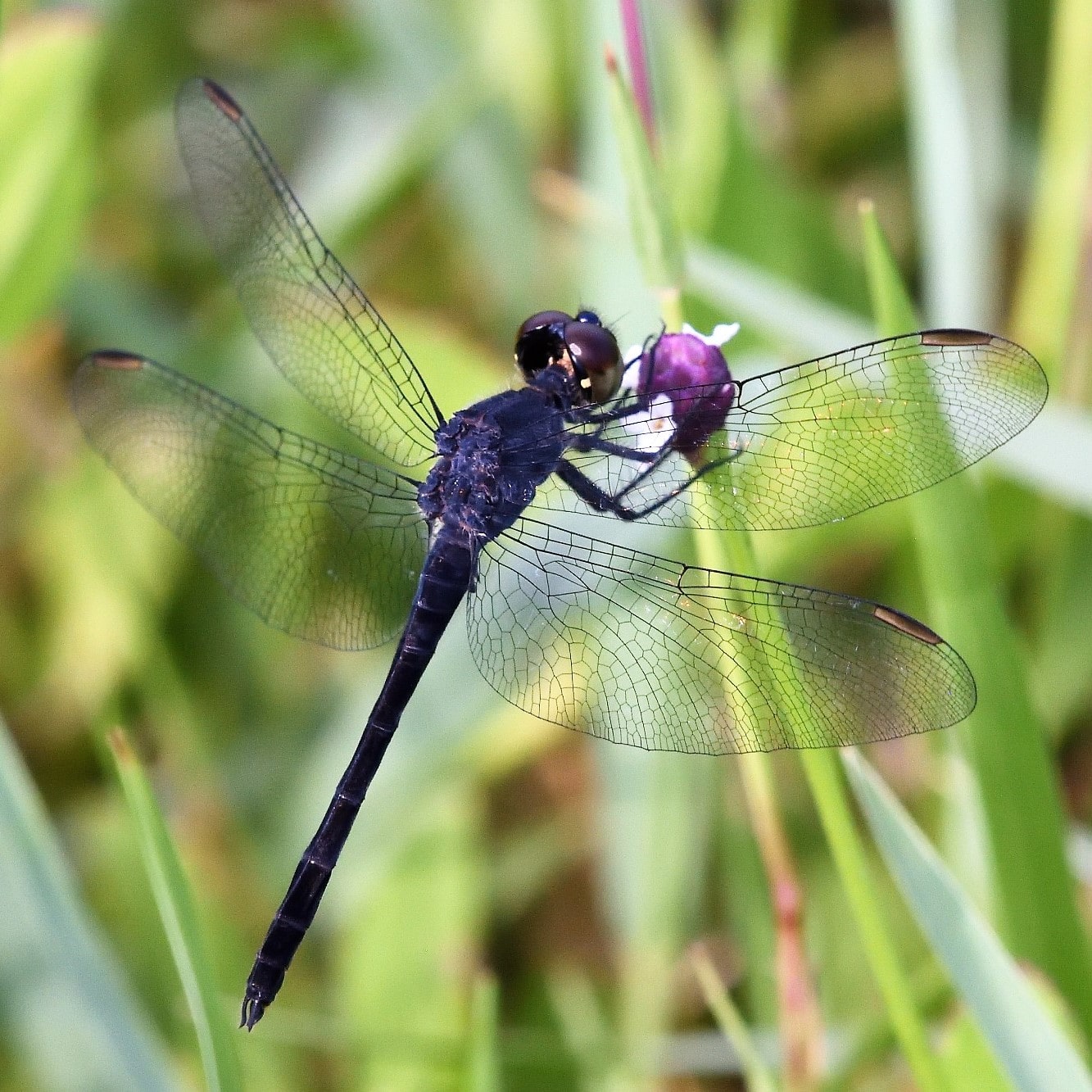Dragonflies are cool insects. They are some of the most powerful flyers and acrobats in the insect world, and they can be mesmerizing to watch. Adults of all sizes and colors appear in early summer everywhere you look, flitting about, snatching insects in midair. The larvae or nymphs of this ancient group of insects are aquatic and are also fierce predators.
Dragonflies are adaptable in their aquatic and terrestrial habitats and are found worldwide, except in our oceans. But alas, there is one species that has found a way to live with salt–the Seaside Dragonlet–and it is common on the gulf coast. This diminutive dragonfly (about 2 inches across) is the only species that has adapted to living in coastal marshes, where its nymphs can tolerate salinities upwards of 40 parts per thousand (ppt). For reference, the average salinity of seawater is 35 ppt.
As a child, I spent a lot of time watching dragonflies hunt from their favored perch on my grandmother’s clothesline, where they rested between flights to snag a bite. I became adept at catching them by sneaking up behind them with outstretched thumb and index finger, slowly sliding them over and under the base of their wings and clamping down. Yes, they were all released and most returned, but with a wary eye on me!
The difference with Seaside Dragonlets is that they are much more approachable and do not fly about nearly as much as other dragonflies. Individuals will make short, brief flights, from a perch on a blade of marsh grass, preferring to let insects come as close as possible. Researchers have hypothesized that this helps reserve energy in a habitat rich with small insect prey. Why waste energy if you do not have to?

So, besides being the only dragonfly to live in saltwater and flying less than most, Seaside Dragonlets are not hard to find. Look for their short flights, usually just above the vegetation, along any tidal marsh you visit. The darker blue males are harder to spot, but they and the brighter colored females will not fly far. Another excuse to get out and about in nature.
Hope to see you in our great outdoors!
*All photos courtesy of Doug Clarke